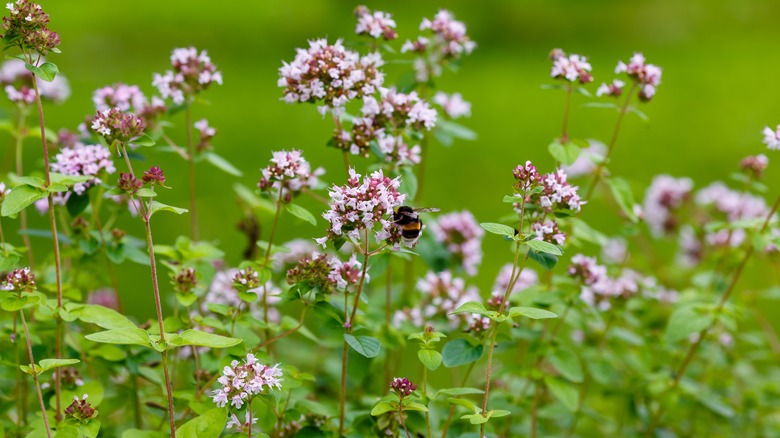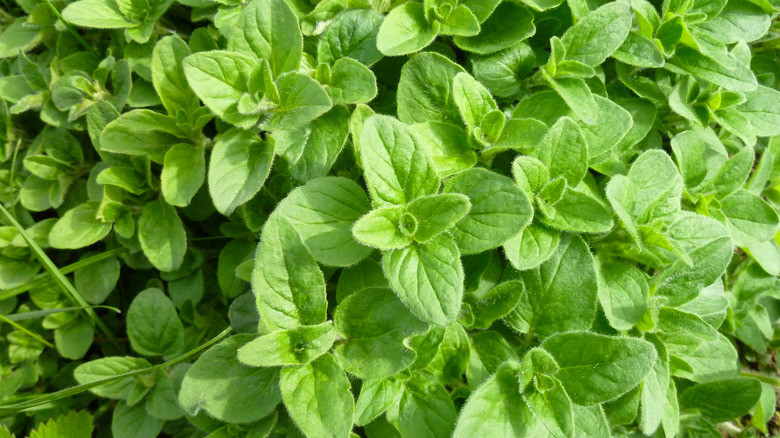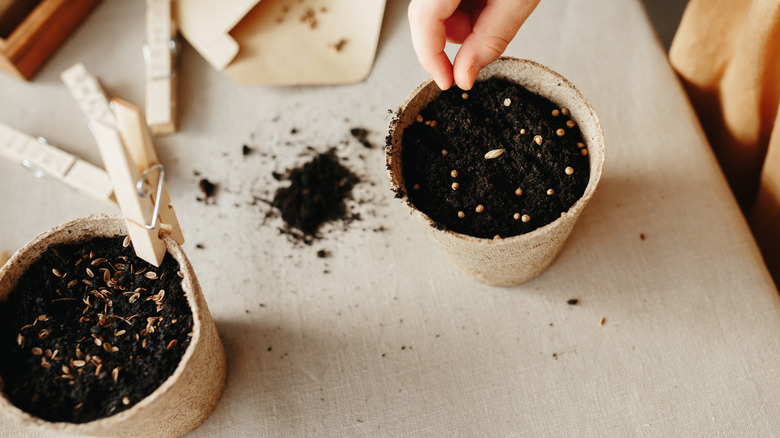How To Attract Beneficial Insects By Growing Oregano In Your Garden
Besides adding some zest to your food, oregano (Origanum vulgare) also has the power to improve a garden's yield quality. Wondering how? Well, oregano's colorful leaves and the nectar from its flowers attract beneficial insects, like lacewings and honeybees, and promote cross-pollination, thereby improving the growth of and lending flavor to planted vegetables like cabbage, beans, broccoli, and cucumbers.
These good insects aren't just helpful for cross-pollination, though; they also help in taking care of pesky pests like whiteflies, aphids, and cabbage moth caterpillars by laying their eggs on oregano leaves. Once hatched, the larvae feast on these common garden pests, eliminating the need for chemical fertilizers that harm crops and soil. Moreover, oregano is a low-maintenance herb that encourages permaculture gardening to help build your garden's health and resilience naturally.
If you're looking to use the oregano plant as a companion plant or as bait to attract beneficial insects to your garden, it can help to know what the plant needs to grow and thrive.
Growing oregano in your garden
To attract beneficial insects to your garden with oregano, you first must grow it. You can do so in a few ways, including using a cutting from a grown oregano plant, transplanting a small plant or seedling to your garden, or growing it new from seed. For the first two methods, you'll want to make sure the ground temperature of your garden is near or above 70 degrees Fahrenheit, typically sometime in the spring when the last frost is completely over.
If you're growing oregano from seed, however, be sure to plant it in well-drained soil. What really makes oregano low maintenance is the fact that you usually don't have to water it daily (do so when the top inch of soil gets dry) or add any fertilizer or compost to your soil.
As for sunlight, oregano can survive if it receives partial sunlight, but it'll especially thrive — and attract those beneficial insects — under direct sunlight. Further, as a friendly herb, oregano can be planted next to all other plants, but you need to remember the spacing requirements since oregano plants can grow up to 2 feet tall and commandeer approximately 18 inches of space horizontally. So plant oregano in your garden about 8 to 10 inches apart. Being a perennial, you don't have to plant it every year.
Other benefits of planting oregano
Though oregano is a simple herb to grow and attracts beneficial insects, there are a few other reasons you may want to grow this quintessential Italian herb in your garden. Perhaps oregano's biggest draw is its taste and aroma. You can harvest fresh oregano from your garden once the leaves get 4-6 inches tall to add them to your soups, stews, and garnish. Fresh oregano can also be used for baking purposes.
Having oregano in your backyard garden is also beneficial as a home remedy. Essential oil made from the plant provides a source of thymol and carvacrol, which can help combat infections, colds, and coughs, as well as aid in digestion. Further, as a perennial, oregano will return in the springtime after going dormant in the winter, and overall requires minimal maintenance once established.
Additionally, since they just need some sunlight and well-drained soil, oregano can easily be grown indoors if you don't have a garden or backyard, or if you want to continue growing them in the wintertime. Of course, if grown indoors, attracting beneficial insects to your kitchen window won't be your primary reason for growing oregano.


